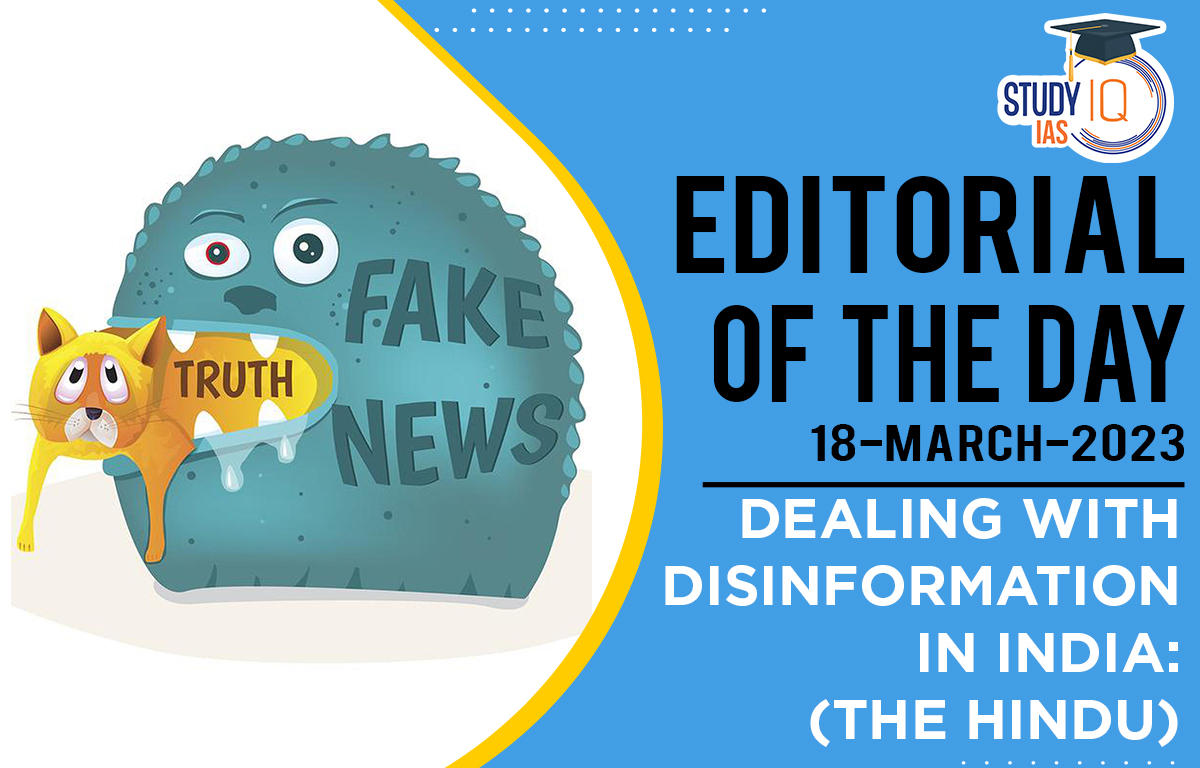Table of Contents
Context: A malicious online campaign concocted a narrative that migrant workers from Bihar were being subjected to violence in Tamil Nadu (TN), causing law & order issues. This event has yet again brought front the potential of fake news in destabilizing democratic institutions and social harmony.
Background: Spread of Fake News
- The misinformation began with spread of video clips of migrant workers leaving TN for the Holi festival. It was shared stating that there was an exodus of migrants due to violent attacks.
- To nurture the narrative, stray news stories of the death of a migrant worker were seeded online to build a wider campaign that there was targeted violence in TN against North India.
- However, the Government of TN used officials including the head of the police force to present the truth and clarify that the circulating videos were false and mischievous.

How does Fake News Impact Society?
- Threat to democracy where political parties and interested groups with access to a huge amount of data could manipulate public narrative for political gains.
- Disrupt communal and social harmony by seeding mistrust, anger and hatred among masses through disinformation and truth sandwich.
- Financial deception: Fake news has also been used to deceive illiterate people financially. Such as Chit fund schemes introduced the concept of online fraud through spam emails, hoaxes of GPS chips in the Rs 2,000 note etc.
- Erosion of faith in Media: Fake news has reduced people’s belief in social, print, and electronic media, affecting the benefits of these media.
What are the Supreme Court (SC) judgments with regard to Fake news?
- In the case of Tehseen S. Poonawalla vs UOI (2018), SC held that it is the duty of the government to curb dissemination of “irresponsible and explosive messages and videos having content which is likely to incite mob violence and lynching of any kind”.
- SC in Alakh Alok Srivastava vs UOI (2020) dealt with a PIL on the plight of migrant workers walking thousands of kilometres back home when the country went into its first lockdown illustrating the real dangers to public order as a result of the dissemination of fake news.
International Efforts to Tackle Fake News
- EU has brought in Code of Practice on Disinformation 2022 which includes transparency in political advertising, empowerment of fact-checkers and researchers, tools to flag disinformation, and measures to reduce manipulative behaviour.
- UK has proposed enacting an Online Safety Bill which will expect social media intermediaries to actively monitor problematic content.
- Countries like Sweden and Kenya are addressing the issue by educating citizens about the dangers of fake news.
- Sweden has enlisted a famous cartoon character to teach children about the dangers of fake news.
Measure taken by India to Curb Fake News
- Section 69A of the IT Act, 2000 through which Government blocks access to any information online that it considers necessary in the interest of sovereignty and integrity of India.
- Draft amendment to IT Rules, 2021 empowers the PIB, to flag inaccurate and fake news related to government bodies on social media platforms.
- IPC Sections 153A and 295 under which action can be initiated against someone creating or spreading fake news if it can be termed as hate speech.
- Complaints relating to objectionable TV content or fake news can be filed to Broadcasting Content Complaint Council (BCCC).
The government needs to strengthen its regulatory mechanism to curb fake news and create awareness among citizens about risk of dissemination of fake news. Additionally promoting and supporting fact checking agencies such as Alt News, which employ AI tools to verify and debunk fake news.





















 WhatsApp
WhatsApp